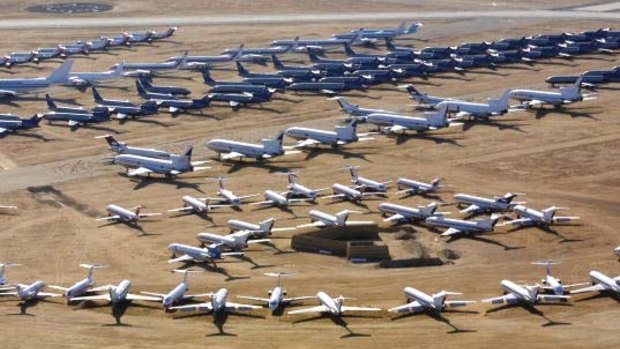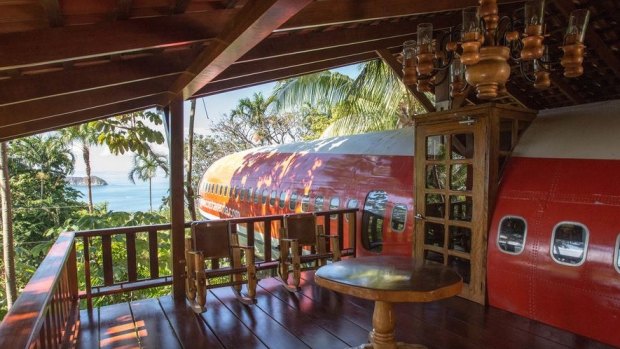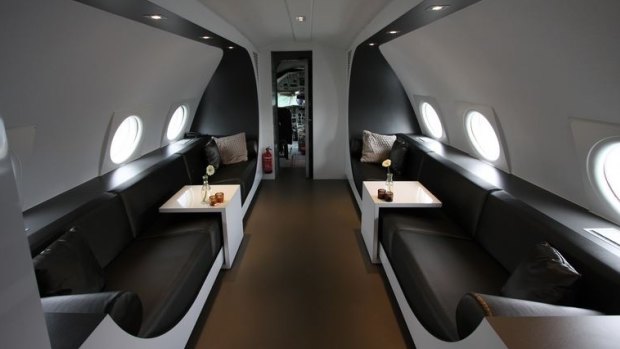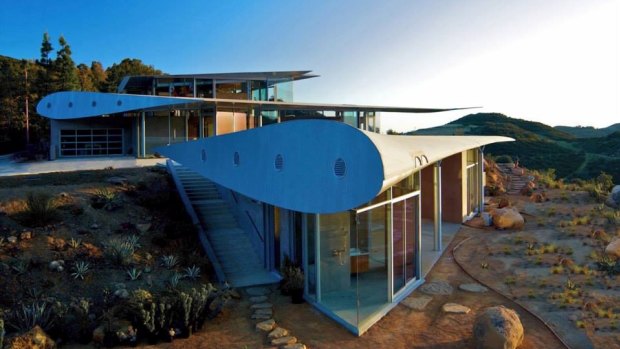This was published 7 years ago
Aircraft graveyards: What happens to old planes?
By Michael Gebicki

Commercial airliners sit in southern California.Credit: Getty Images
The amount of money airlines invest into their aircrafts is mind-boggling. A Boeing 787-9 Dreamliner sells for $US265 million. Current list price of a new Airbus A380 is $US432.6 million. Emirates has 75 Airbus A380s in its fleet, with more on order. By contrast, the world's largest cruise ship, Harmony of the Seas, cost $US1.35 billion to build, about the same as three A380s.
So what happens to these aircraft when they reach their use-by date?
The most profitable option for an airline looking to retire some of its fleet is selling the aircraft intact to another airline.

The 727 Fuselage Home at Hotel Costa Verde, Costa Rica.Credit: TripAdvisor
Many third-world airlines, operating in a less strictly regulated environment than that which applies in Europe and North America, are often ready buyers for aircraft at the end of their working life in regions where maintenance and safety protocols are more rigidly observed.
Industry websites such as SpeedNews and GlobalPlaneSearch.com are online marketplaces where buyers and sellers meet. You might pick up a 17-year-old Boeing 737-300 for $US3.9 million, one recent, careful Russian owner. Or how about a one-year-old Boeing 787, a steal at $US139 million?
See also: 10 things on an aircraft you never knew about

The airplane suite at Teuge Airport.Credit: vliegtuighotel.nl
The next option is breaking them up for scrap. When an aircraft starts to rack up flying hours, maintaining its airworthiness becomes increasingly expensive. At some stage the airline will decide that it can make more selling the aircraft than continuing to operate it.
Particularly for newer aircraft there is a healthy demand for recycled parts and whatever is saleable will be stripped out and sold. Jet engines, avionics, auxiliary power units and even seats all have potential value. Items like the winglets from a Boeing 737NG can fetch $US650,000 on the second-hand market.
In North America aircraft destined for the scrapheap will typically end up at Mojave Air and Space Port in eastern California. This is just one of a number of vast storage facilities for civilian and military aircraft scattered across the deserts of south-western USA but Mojave is the largest for civilian aircraft, with more than 1000 aircraft parked across its sun-baked earth. High and dry, with stable weather patterns, this desert airport is virtually a humidicrib environment for aircraft, ideal for preserving them until a buyer comes along.

The Wing House in Malibu is built from a Boeing 747.Credit: Wing House/Facebook
Some of these aircraft are being stored rather than scrapped. In periods of slowing demand an airline might decide to mothball some of its fleet and Mojave provides a low-cost storage facility while the airline awaits an upswing in demand.
The number of commercial aircraft parked at these boneyards is used by industry analysts to gauge the health of the airline industry. In the aftermath of 9/11, when demand for air travel in the US fell by 30 per cent, the desert parking lots swelled.
See also: What it was like when you could smoke on board a plane
In Europe, where space is at a premium and there is nowhere to store aircraft outside in a stable, weather-proof environment, planes tend to be recycled and broken up far more quickly. After all the valuable components have been removed whatever remains will be chopped into pieces and sold for scrap.
Even Australia has an aircraft graveyard. Located close to Alice Springs Airport, which was chosen for exactly the same reasons as the North American desert facilities, the Asia Pacific Aircraft Storage facility received its first aircraft in mid 2014, with recent arrivals from the fleets of Qantas and Tigerair.
Military aircraft suffer a similar fate. In the USA retired military aircraft are usually shipped to Davis-Monthan Air Force Base located south of Tucson, Arizona, the world's largest aircraft boneyard, home to around 4500 aircraft. Some are dismantled and their parts carted, to be sold to foreign militaries in need of spares. Others that still have a potential ongoing strategic role are mothballed in a state of high combat readiness, to be brought back into service if required.
See also: Why do airlines close the blinds on daylight flights?
Scrapped aircraft can resurface in consumer goods such as cell phones and computers, or recycled metals for use in new aircraft. With a little imagination, they can take on a whole new existence.
A vintage Boeing 727 now serves as a rainforest suite at a hotel on the coast of Costa Rica.
The Wing House is a luxurious Malibu mansion built from a Boeing 747.
Oregon resident Bruce Campbell bought a Boeing 727-200 for $US100,000, installed it in a forest clearing and made a comfy home.
At Stockholm's Arlanda Airport, Jumbo Stay is a smart hostel inside the fuselage of a decommissioned Boeing 747. Cockpit suite, anyone? See Google Map above.
At the village of Teuge in the Netherlands a 1960 Ilyushin 18 has been converted to a single luxury suite just for two.
See also: Top 10 air travel facts: Emergency equipment, safety and food
See also: What happens if a plane door is opened mid-flight?
Sign up for the Traveller newsletter
The latest travel news, tips and inspiration delivered to your inbox. Sign up now.